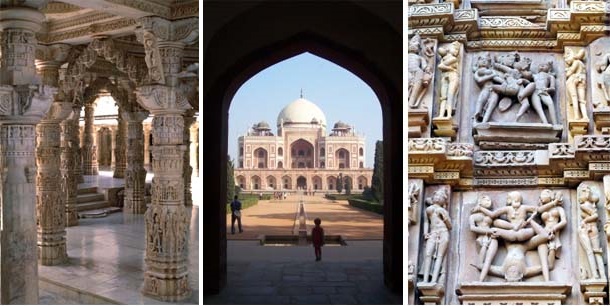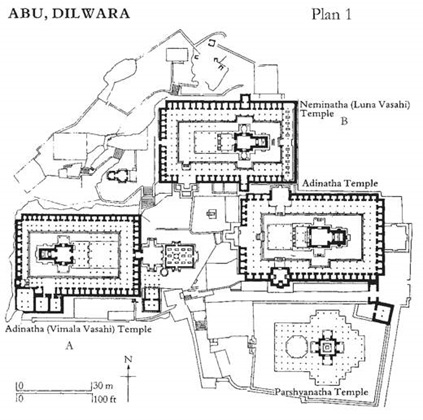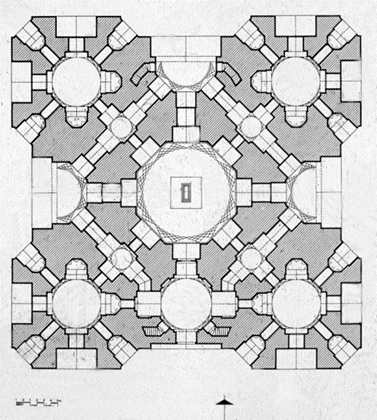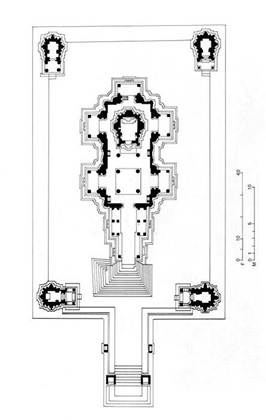Apr 19, 2024
Apr 19, 2024
I praise you, for I am fearfully and wonderfully made.
Wonderful are your works; my soul knows it very well.
— Psalm 139:14
Thy Neighbor’s Wife: Morality of the Architectural Ensemble
If being an alpha-male is so passé, it seems that the creators of architecture and urbanity back in the good old days were one step ahead of us already. This is not surprising – we are so good at imitating the past that we have already forgotten that it’s the past we are imitating. Moses, with his Ten Commandments, would be surprised too, though perhaps long walks across the desert would dim his ardor somewhat.

Dilwara Temple Humayun's Tomb Khajuraho Temple
The neighbor has a curious role in Indian history. This may seem strange for a country surrounded by neighbors, practically none of whom India is in good relations with. But this does translate into a microcosm of the actual neighbor, you can see into his house, he is very important for your social sense of belonging, and you’re not quite sure to what extent you want to ‘let him’ into your house. There’s this constant tension, the tension that springs from one’s moral values being questioned and teased at, your heartstrings pulled and your kids annoyed.
If none of this seems to have anything to do with architecture, then think again. Mughal and Gupta politics were based on the concept of the neighbor: sometimes harmless, sometimes threatening, but always an obstacle to conquering the ‘whole’ of India – a dream that no one, not even the British, quite realized. Is it any wonder then, that some of the greatest architectural masterpieces have quite effortlessly, even subliminally, incorporated the concept of the neighbor?
Let’s take the Dilwara temples at Mount Abu. Spread out over the top of a hillside, the temples exist in tension with one another, which is perhaps a tribute to their planning that recalls the Parthenon complex in Athens. None of them dares to directly face the other, as if this would be a challenge that the gods themselves could not resist. But, by keeping their main faces hidden, they replicate with perfection the concept of the Indian mohalla, or neighborhood in earlier non-planned cities. Here, privacy, up to a limit, is guaranteed, though not taken for granted, and your possessions can be out of reach of prying eyes, provided, of course, you do not make a show of them.

Or look at the tomb of Humayun, in the heart of Delhi. Here the alpha-male, which is the figure of the Emperor himself, is surrounded by a retinue of smaller tombs, none of which, of course, faces any other directly. In this neighborhood of necromancy we find a microcosm of what the Emperor’s durbar must have been like: replete with hangers’-on, sycophants, the odd original gem, and dozens of seekers-after-fortune in the court of the Great Moghul. Strangely this administrative and bureaucratic setup is reflected in the afterlife as well, complete with the tomb of the royal barber and attendant queens. In this after-death communal gathering, the emperor Humayun has pride of place, but even HE does not dare to face directly one of his queens, the closest thing to this being parallel graves. Naturally the ‘others’ are relegated to places outside the main tomb, in decreasing order of importance. Within this funerary layout we can reconstruct, with accurate and startling clarity, the ‘order of things’ in the Mughal court.

But what about the architecture of Khajuraho? Where is chastity and modesty in this most exuberant of places? How can we reconcile the concept of a chaste Indian neighborhood with the excess on display at Khajuraho? Who are these ‘wives’ that we can look upon so unashamedly, exposed to the natural light of the day? It seems obvious that Khajuraho was the epitome of a decadent Hindu civilization, which was in the throes of excess and soon to be overcome by a younger, Islamic power. Yet even in Khajuraho none of the temples dares to face each other, each is isolated in its own pocket of land, representing perhaps, the small kingdoms that pre-Mughal India was divided into in the 12th century.

And finally, to close the argument, let’s take the case of the British, who found an India in the grip of the caste system on one hand, and the bloated Mughal Empire on the other hand. European structures in India were like a breath of fresh air, but were the inhabitants really ready for healing? With their abolition of sati and the institution of a British education system, the English challenged the very foundations of sub-continental society, a sore that was soon to erupt in the war of 1857. It is small wonder that European churches were garrisoned like small forts, the better to protect them from envious eyes.
We were making the case here that there is an inherent morality to urban structures and architecture in India, a morality that is tempered by the obligations of the hierarchical social system according to which some layouts and plans are ‘good’ and others ‘bad’. Very little of this has to do with orientation, sun, temperature and so on – though they may have played a role to an extent. Instead, the argument is that ‘good’ and ‘bad’ in ancient Indian society had as much to do with what helped in preserving the social system intact, as opposed to measuring ‘good’ and ‘bad’ on technological progress and materials advancement, something that has traditionally been the preserve of Western architecture since the Renaissance.
And what about the neighbor’s wife? In ‘good’ Indian society, she remains an enigma, an untouchable, unless of course, something cataclysmic happens to change the situation. But that is a different story, and its name might be ‘war’, ‘invasion’, or simply ‘progress’.
Images (c) gettyimages.com
Architectural drawings by author
22-Feb-2014
More by : Ashish Nangia